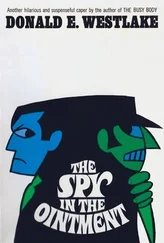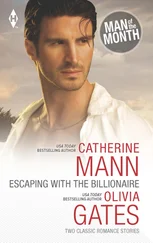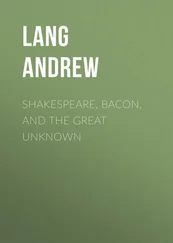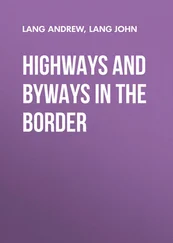Andrew Lang - Pickle the Spy; Or, the Incognito of Prince Charles
Здесь есть возможность читать онлайн «Andrew Lang - Pickle the Spy; Or, the Incognito of Prince Charles» — ознакомительный отрывок электронной книги совершенно бесплатно, а после прочтения отрывка купить полную версию. В некоторых случаях можно слушать аудио, скачать через торрент в формате fb2 и присутствует краткое содержание. Жанр: foreign_antique, foreign_prose, на английском языке. Описание произведения, (предисловие) а так же отзывы посетителей доступны на портале библиотеки ЛибКат.
- Название:Pickle the Spy; Or, the Incognito of Prince Charles
- Автор:
- Жанр:
- Год:неизвестен
- ISBN:нет данных
- Рейтинг книги:4 / 5. Голосов: 1
-
Избранное:Добавить в избранное
- Отзывы:
-
Ваша оценка:
- 80
- 1
- 2
- 3
- 4
- 5
Pickle the Spy; Or, the Incognito of Prince Charles: краткое содержание, описание и аннотация
Предлагаем к чтению аннотацию, описание, краткое содержание или предисловие (зависит от того, что написал сам автор книги «Pickle the Spy; Or, the Incognito of Prince Charles»). Если вы не нашли необходимую информацию о книге — напишите в комментариях, мы постараемся отыскать её.
Pickle the Spy; Or, the Incognito of Prince Charles — читать онлайн ознакомительный отрывок
Ниже представлен текст книги, разбитый по страницам. Система сохранения места последней прочитанной страницы, позволяет с удобством читать онлайн бесплатно книгу «Pickle the Spy; Or, the Incognito of Prince Charles», без необходимости каждый раз заново искать на чём Вы остановились. Поставьте закладку, и сможете в любой момент перейти на страницу, на которой закончили чтение.
Интервал:
Закладка:
Meanwhile the French Government kept protesting their total ignorance. On April 3, 1750, Walton announces that James has had a long letter from Charles containing his plans and those of his adherents, for which he demands the Royal approval. James has sent a long letter to Charles by the courier of the Duc de Nivernais, the French ambassador in Rome. By the middle of June, James is reported by Walton to be full of hope, and to have heard excellent news. But these expectations were partly founded on a real scheme of Charles, partly on a strike of colliers at Newcastle. A mob orator there proclaimed the Prince, and the Jacobites in Rome thought that His Royal Highness was heading the strike! 69 69 Mann, June 19, 1750.
In July, the same illusions were entertained. On August 12, Albemarle, from Paris, reports the Prince to be dangerously ill, probably not far from the French capital. He was really preparing to embark for England. Albemarle, by way of trap, circulated in the English press a forged news-letter from Nancy in Lorraine, dated August 24, 1750. It announced Charles’s death of pneumonia, in hopes of drawing forth a Jacobite denial. This stratagem failed. On August 4, James, though piqued by being kept in the dark, sent Charles a fresh commission of regency. 70 70 Stuart Papers. Browne, ii. 73.
Of the Prince’s English expedition of September 1750, the Government of George II. knew nothing. Pickle was in Rome at the moment, not with Charles; what Pickle knew the English ministers knew, but there is a difficulty in dating his letters before 1752, and I am not aware that any despatches of his from Rome are extant.
We have now brought the history to a point (September 1750) where the Prince, for a moment, emerges from fairyland, and where we are not left to the perplexing conjectures of diplomatists in Paris, Dresden, Florence, Hanover, and St. Petersburg. In September 1750, Charles certainly visited London. There is a point of light. We now give an account of his actual movements in 1749–1750.
CHAPTER IV
THE PRINCE IN FAIRYLAND. II. – WHAT ACTUALLY OCCURRED
Charles mystifies Europe – Montesquieu knows his secret – Sources of information – The Stuart manuscripts – Charles’s letters from Avignon – A proposal of marriage – Kennedy and the hidden treasure – Where to look for Charles — Cherchez la femme ! – Hidden in Lorraine – Plans for entering Paris – Letter to Mrs. Drummond – To the Earl Marischal – Starts for Venice – At Strasbourg – Unhappy Harrington – Letter to James – Leaves Venice ‘A bird without a nest’ – Goes to Paris – The Prince’s secret revealed – The convent of St. Joseph – Curious letter as Cartouche – Madame de Routh – Cartouche again – Goring sent to England – A cypher – Portrait of Madame de Talmond – Portrait of Madame d’Aiguillon – Intellectual society – Mademoiselle Luci – ‘Dener Bash’ – The secret hoard – Results of Goring’s English mission – Timidity of English Jacobites – Supply of money – Charles a bibliophile – ‘My big muff’ – A patron of art – Quarrels with Madame de Talmond – Arms for a rising – Newton on Cluny – Kindness to Monsieur Le Coq – Madame de Talmond weary of Charles – Letters to her – Charles reads Fielding’s novels – Determines to go to England – Large order of arms – Reproached by James – Intagli of James — En route for London – September 1750.
The reader has had an opportunity of observing the success of Charles in mystifying Europe. Diplomatists, ambassadors, and wits would have been surprised, indeed, had they known that one of the most famous men of the age possessed the secret for which they were seeking. The author of ‘L’Esprit des Lois’ could have enlightened them, for Charles’s mystery was no mystery to Montesquieu, who was friendly with Scottish and English Jacobites. The French Ministers, truly or falsely, always professed entire ignorance. They promised to arrest the Prince wherever he might be found on French soil, and transport him to sea by Civita Vecchia. 71 71 Correspondence of the Duke of Bedford , ii. 69. Bedford to Albemarle. Also op. cit. ii. 15. March 13, 1749. Bedford to Colonel Yorke.
It will be shown later that, at least in the autumn of 1749, this ignorance was probably feigned.
What is really known of the movements of the Prince in 1749? Curiously enough, Mr. Ewald does not seem to have consulted the ‘Stuart Papers’ at Windsor, while the extracts in Browne’s ‘History of the Highland Clans’ are meagre. To these papers then we turn for information. The most useful portions are not Charles’s letters to James. These are brief and scanty. Thus he writes from Avignon (January 15, 1749), ‘We are enjoying here the finest weather ever was seen.’ He always remarks that his health ‘is perfect.’ He orders patterns for his servants’ liveries and a button, blue and yellow, still remains in a letter from Edgar! The button outlasts the dynasty. Our intelligence must be extracted from ill-spelled, closely scrawled, and much erased sheets of brown paper, on which Charles has scribbled drafts for letters to his household, to Waters, his banker in Paris, to adherents in Paris or London, and to ladies. The notes are almost, and in places are quite, illegible. The Prince practised a disguised hand, and used pseudonyms instead of names. Many letters have been written in sympathetic ink, and then exposed to fire or the action of acids. However, something can be made out, but not why he concealed his movements even from his banker, even from his household, Oxburgh, Kelly, Harrington, and Graeme. It is certain that he started, with a marriage in his eye, from Avignon on February 28, 1749, accompanied by Henry Goring, of the Austrian service. There had already been a correspondence, vaguely hinted at by James’s secretary, Edgar, between Charles and the Duke and a Princess of Hesse-Darmstadt. On February 24, 1749, Charles drafted, at Avignon, a proposal for the hand of the Duke’s daughter. He also drafted (undated) a request to the King of Poland for leave to bring his wife, the Princess of Hesse-Darmstadt, into Polish territory. 72 72 Browne, iv. 57, 63.
We may imagine His Polish Majesty’s answer. Of course, the marriage did not take place.
Charles had other secrets. On February 3, 1749, he wrote to Waters about the care to be taken with certain letters. These were a correspondence with ‘Thomas Newton,’ (Major Kennedy), at Mr. Alexander Macarty’s, in Gray’s Inn, London. Newton was in relations with Cluny Macpherson, through a friend in Northumberland. Cluny, skulking on his Highland estates, was transmitting or was desired to transmit a part of the treasure of 40,000 louis d’or , buried soon after Culloden at the head of Loch Arkaig. 73 73 In the Gask Papers it is said that 5,000 l. was sent by Cluny to Major Kennedy. Kennedy himself buried the money.
Of this fatal treasure we shall hear much. A percentage of the coin was found to be false money, a very characteristic circumstance. Moreover, Cluny seems to have held out hopes, always deferred, of a rising in the Highlands. Charles had to be ready in secrecy, to put himself at the head of this movement. There was also to be an English movement, which was frowned on by official Jacobitism. On February 3, 1749, Charles writes from Avignon to ‘Thomas Newton’ (Kennedy) about the money sent south by Cluny. He repeated his remarks on March 6, giving no place of residence. But probably he was approaching Paris, dangerous as such a visit was, for in a note of March 6 to Waters, he says that he will ‘soon call for letters.’ 74 74 All these facts are taken from the Stuart Papers, in manuscript at Windsor Castle.
His noms de guerre at this time were ‘Williams’ and ‘Benn’; later he chose ‘John Douglas.’ He was also Smith, Mildmay, Burton, and so forth.
Интервал:
Закладка:
Похожие книги на «Pickle the Spy; Or, the Incognito of Prince Charles»
Представляем Вашему вниманию похожие книги на «Pickle the Spy; Or, the Incognito of Prince Charles» списком для выбора. Мы отобрали схожую по названию и смыслу литературу в надежде предоставить читателям больше вариантов отыскать новые, интересные, ещё непрочитанные произведения.
Обсуждение, отзывы о книге «Pickle the Spy; Or, the Incognito of Prince Charles» и просто собственные мнения читателей. Оставьте ваши комментарии, напишите, что Вы думаете о произведении, его смысле или главных героях. Укажите что конкретно понравилось, а что нет, и почему Вы так считаете.












